The statue of Liberty holds her torch 46m above her pedestal on Liberty Island in New York. In contrast, the Christ the Redeemer in Rio de Janeiro stands at a mere 30m once you reach his feet. Far away in China’s Henan province, the Spring Temple Buddha, completed in 2008, rises to a height of 128m.
Liberty, Christ, and Buddha now have a new figure to look up to as India has completed what, at 182m, is believed to be the tallest statue in the world. The colossal ‘Statue of Unity’, which overlooks the Narmada river in the western state of Gujarat, is of Vallabhbhai Patel, a leader in the country’s freedom struggle and the first deputy prime minister after independence. The figure was designed by the now 93-year-old Ram Vanji Sutar, one of India’s most experienced living sculptors. He has previously created more than 50 significant statues of major figures such as Mahatma Gandhi. Patel here is shown wearing a dhoti, sandals and shawl, poised with his hands by his side as if ready to take a step forward. ‘Getting the facial expressions, the pose, the texture and drapery of the statue can be a daunting task when it is 522 feet high,’ Sutar has said of his design, which he created in his studio in Noida, near Delhi – where his son says he still spends most of his day.
Patel may be known as ‘the Iron Man of India’, but he is rendered here in bronze – 12,000 panels of it, covering 210,000 cubic metres of cement and 25,000 tonnes of steel (making a total weight of 67,000 tonnes). The initial idea was to use recycled metal from old iron farming implements collected across the country, but it’s reported that not enough good quality iron could be found.
When the statue was unveiled last October, its £314m pricetag prompted protests from members of the local community in this mostly tribal area – many of whom had been moved to make way for it. The Sardar Sarovar dam that it overlooks has long been controversial: activists, including the writer Arundhati Roy, have objected to the number of homes now at risk from the prospect of rising water levels. In this light, the decision to create ‘a tribal museum’ nearby seems rather insensitive.
Gujarat will not keep its place at the top of the tall-statues rankings for long. In November, the government of Maharashtra, the state immediately to its south, approved the budget for a 212m-high statue of the 17th-century warrior king Shivaji off the coast of Mumbai. Sutar is said to be working on this project too, alongside his son Anil, and the estimated completion date is 2021. Meanwhile, Uttar Pradesh (UP), a state adjoining Delhi in the north, has announced plans for a 221m-high statue of the Hindu deity Ram and a 170m-high likeness of 19th-century Hindu monk Swami Vivekananda, as well as more modestly sized figures of late former prime minister Atal Bihari Vajpayee of the incumbent Bharatiya Janata Party (BJP), and the two previous head priests of the temple that Yogi Adityanath, a monk – and the state’s current chief minister – now leads.
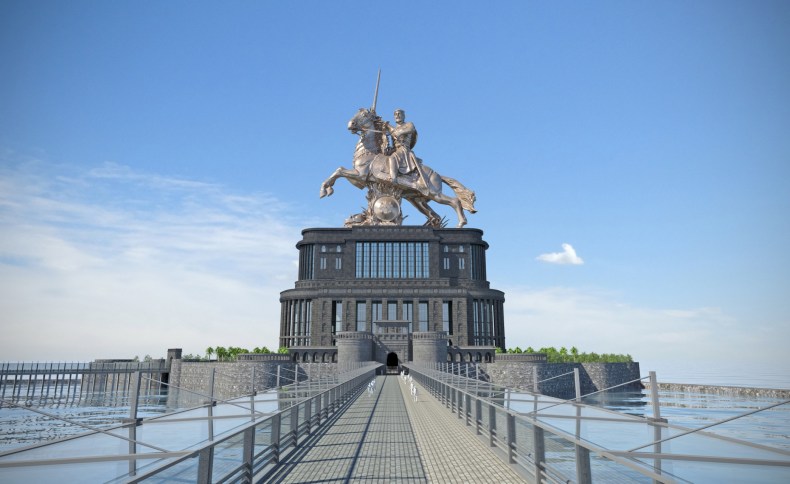
Render of the most recent design (as of February 2019) for the proposed 212m-high statue of the 17th-century warrior king Shivaji in Marahashtra
China is still believed to be home to the greatest number of statues over 30m tall, but if this wave of construction continues, India could soon catch up. (Somewhat ironically, the bronze for the Patel statue was cast in a foundry in Nanchang and hundreds of Chinese workers played a part in building it.) It is not the case, however, that there is a concerted campaign to hold this particular record: as art critic Girish Shahane tells me, the Shivaji statue was first announced 10 years ago, the Patel statue was initiated in 2010, and the recent spate of announcements made after the latter was completed, so it’s really more of a ‘snowball effect’.
But the statues erected and torn down at any given time reflect the era’s politics – as the Rhodes Must Fall campaign, the efforts to remove Confederate statues in the United States, and the recent removal of a statue of Gandhi in Ghana demonstrate. This is election year in India, and the current prime minister, the BJP’s Narendra Modi – a right-wing populist who swept to victory on a Hindu nationalist, anti-Muslim ticket – is looking to win a second term. Recently, he has been subject to growing accusations of corruption, most crucially over the award of a major defence contract, and of economic mismanagement, after the unprecedented overnight cancellation of all 500 and 1,000 rupee notes in circulation in 2016. As Shahane says of these monuments, many of which reflect the government’s Hindu majoritarian agenda: ‘The statues are political symbols aimed at voters.’
The most obvious of these are the ones in Uttar Pradesh, a BJP heartland and home to Modi’s own constituency of Varanasi. The programme here is being driven by the saffron-robe-wearing chief minister Yogi Adityanath, a founder of a far-right youth group promoting the values of ‘Hindutva’ – Hindu fundamentalism. The Ram statue is planned for the city of Ayodhya, which has long been a flashpoint for communalist conflict: in 1992, a 16th-century mosque on a site that some believe to be the deity’s birthplace was destroyed by a Hindu mob, sparking riots across the country. Announcing the project, Adityanath said the Ram statue would ‘establish Ayodhya’s identity’.
Shivaji and Patel are perhaps less obviously aligned with the BJP agenda. Rather, they are examples of the movement co-opting complex historical figures for its own purposes. Shivaji, for example, fought both with and against the Mughal empire over the course of his life, but is increasingly being a portrayed as a symbol of Hindu resistance to Muslim autocracy. Patel, who was instrumental in integrating the 562 princely states into the new nation, was a leading figure in the Congress Party. But as the BJP, which was formed after the freedom struggle, has no nationalist heroes of its own it has sought to align itself with individuals it considers to have been marginalised by the Gandhi/Nehru family, which has been in charge of the Congress, and therefore the nation, for much of the past seven decades.
Statue-building is, of course, not a new phenomenon – monuments to political and cultural figures exist all across India, often the result of popular initiatives – nor is their use as political symbols. As part of a drive to replace colonial symbols with local ones, a statue of Lord Curzon, viceroy of India between 1899 and 1905, in the old British capital of Calcutta (now Kolkata), was replaced by one of the Hindu guru Sri Aurobindo – although for reasons that remain unclear, the neoclassical cherubs around his feet remain untouched. This move has parallels with the renaming of cities and streets to purge the country of references to British imperialism, when Bombay became Mumbai, Madras became Chennai and, in Kolkata, streets with names such as ‘Harrison’, ‘Lansdowne’ and ‘Harrington’ became Mahatma Gandhi Road, Sarat Bose Road and Ho Chi Minh Sarani.
A similar spate of renaming is underway in Uttar Pradesh, but with different intentions: towards the end of last year the yogi chief rebranded the districts of Faizabad and Allahabad – both Islamic names given by Mughal rulers – with the Hindu-tinged ‘Ayodhya’ (after the city within it) and ‘Prayagraj’. In a culture in which deities are worshipped in physical form, statues are arguably an even more potent symbol of this strategy than renaming alone.
Writing for the online publication The Wire, Kajri Jain, author of Gods in the Time of Democracy, an upcoming book about monumental statues in post-liberalisation India, points to two other antecedents of the current trend. First, the erection by Mayawati Das, Uttar Pradesh’s chief minister between 1995 and 2012, of a series of modest statues and monuments recognising notable figures from the marginalised Dalit caste, which, Jain points out, were met with massively disproportionate protests. These, she suggests, inspired a wave of ‘statue wars’ with less clear social objectives in the lead-up to the 2014 elections, as politicians sought to win votes – a 30m depiction of the monkey god Hanuman in the central state of Madhya Pradesh among them. Another wave of statue-building, she says, came in the early 1990s, when successful business-people funded religious statues as a gesture of public patronage – an intersection between India’s new-found economic liberalism and religion.
Sugata Bose is a professor of South Asian history at Harvard and an Indian MP for the Trinamool Congress, the fourth largest opposition party, whom I know personally. He tells me the current, political and ideologically driven wave of statue-building is being directed from the top. ‘Modi is very much a part of this,’ he says. In comparison to previous statues constructed in the country, the sheer size of the latest crop is unusual and reflects the prime minister’s own self-image. ‘I think that Modi, who is trying to fashion himself as a strong and tall leader, has a fascination for these gigantic statues,’ says Bose, who criticised the plans for the Patel statue as a waste of resources. The scale of these gestures, Bose says, ‘is an expression of a kind of muscular, Hindu majoritarian nationalism. There are other ways of being proud as Indians, but that seems to be the dominant political tendency at the moment.’
On the eve of India’s next general election, Modi is struggling to prove his economic and social credentials – as unemployment reaches a 20-year high and the country continues to battle poverty and other social problems. A data analysis agency called India Spend has noted that the money spent on the Statue of Unity could have instead funded ‘two new Indian Institute of Technology campuses, five Indian Institute of Management campuses and six Indian Space Research Organisation missions to Mars’. Modi clearly hopes that spectacle will trump competence in the eyes of voters. ‘The statue will remind those who question India’s existence, that this nation was, is and will remain eternal,’ he said at the launch in Gujarat. To use a word coined by another strongman leader, this is politics done bigly.
The sight of economic and social dissatisfaction being played out as an argument over national identity is one that can be witnessed in various forms around the world. In India, like many post-colonial nations, there is another dimension to it: more than 70 years after independence, there is no longer a clear objective such as self-rule to unite people, so competing ideas over what India is and should be now and in the future – plural and progressive or homogenous and traditional – are in conflict. For its part, the BJP – under the guise of ‘unity’ and preserving history – is rewriting the story of India as one of Hindus. If Modi’s strategy results in an election win this year, it remains to be seen whether the culmination of this movement will be a 400m-high statue of the prime minister himself.
From the February 2019 issue of Apollo. Preview and subscribe here.
Unlimited access from just $16 every 3 months
Subscribe to get unlimited and exclusive access to the top art stories, interviews and exhibition reviews.

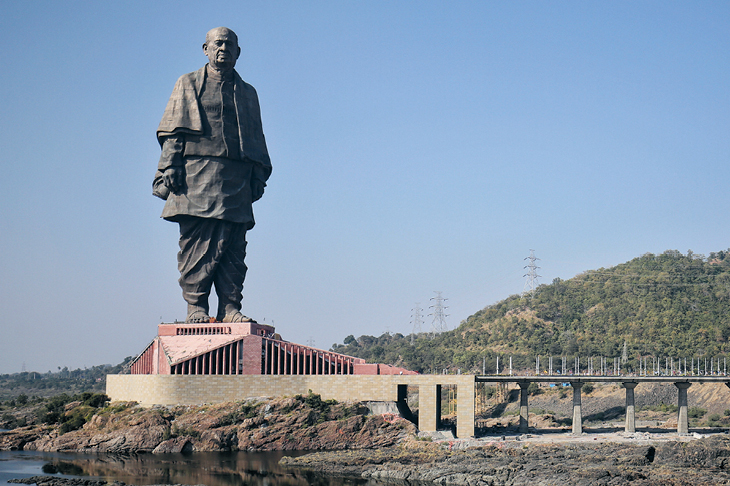
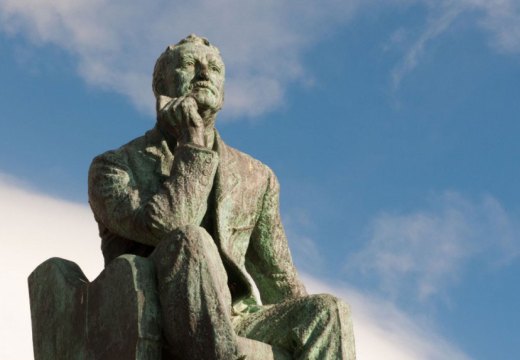
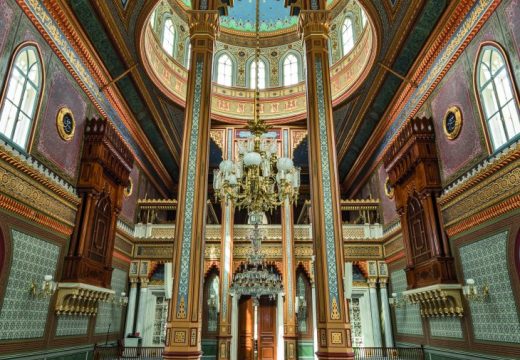
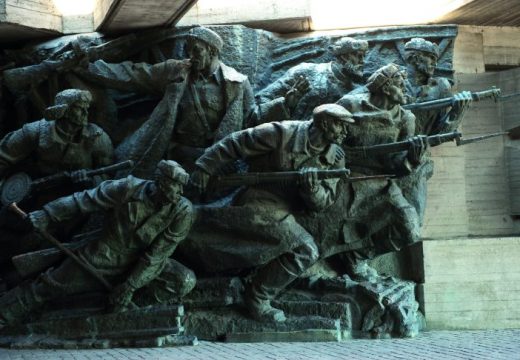









![Masterpiece [Re]discovery 2022. Photo: Ben Fisher Photography, courtesy of Masterpiece London](http://www.apollo-magazine.com/wp-content/uploads/2022/07/MPL2022_4263.jpg)
It’s time for the government of London to return to its rightful home